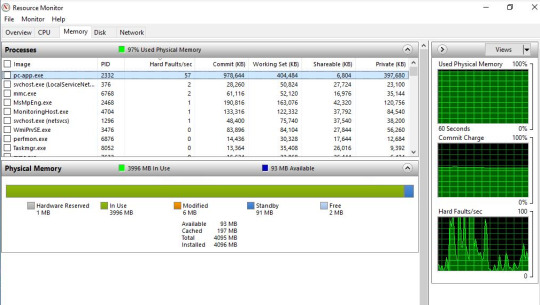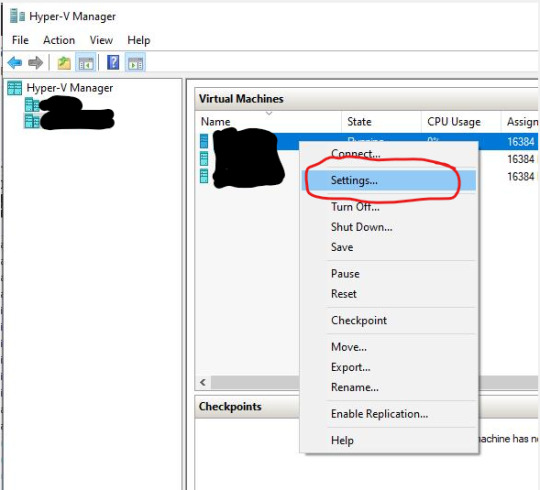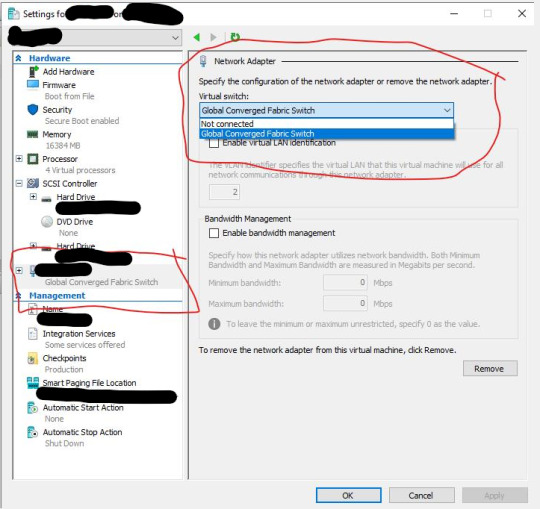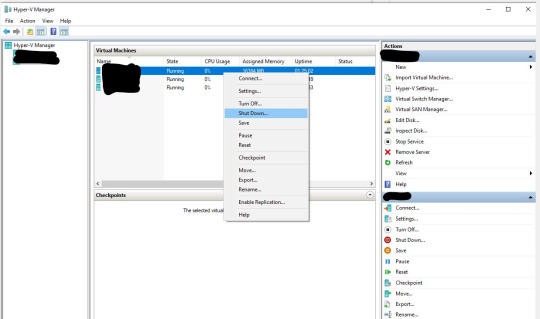Text

#scott mccloud#communication#humanity#time management#kanban#making work visible#Dominica DeGrandis#project management
5 notes
·
View notes
Text
PDF Warning
Situational awareness, as defined in FM 3-0, is the immediate knowledge of the conditions of the operation, constrained geographically and in time. ASA takes this principle one step farther. ASA trains Soldiers anyone to develop judgment and discernment through predictive profiling and observing their surrounding environment in order to engage these audiences effectively and appropriately. These useful skills enable Soldiers anyone to move beyond the reactive concepts often expressed in Army doctrine to become predictive and proactive warfighters who are equally adept at engaging friendly audiences as they are with threats. Practicing ASA can mitigate the need for lethal action through nonlethal engagement and persuasion.
0 notes
Text
For those that want to cut to the chase, here's the tl;dr
don't use the same server as your production system
upgrade to pg 12+ (or avoid common table expressions in your queries)
go easy on indexes – less is more
consider partitioning long tables
ensure you're not I/O-bound
vacuum analyze after bulk insertion
explore parallel queries
increase statistics sampling
use fewer columns on frequently-queried tables
at scale consider a dedicated warehouse
0 notes
Text
On Tuesday, Apple updated the iMac with new SKUs, display panels, and various color options. The new systems are powered by Apple’s M1 CPU, which uses the ARMv8 ISA rather than an Intel or AMD x86 CPU.
0 notes
Text
Okay, digging into this, it doesn't sound as significant as one would be lead to believe. The Naked Security podcast (S3 Ep30) covers it fairly well and reading the white paper, I wouldn't say it's a call to panicked action. Something to be aware of more or less for anyone who has a distinct, regular use of AirDrop. And really, if security is any kind of concern for you, why would you ever fall back to Everyone from Contacts Only?
Exactly. You wouldn't. So, if you are worried about this attack:
Turn AirDrop off if you aren’t using it. That’s good security practice anyway. There’s no need to be discoverable to other AirDrop users all the time.
Don’t blindly fall back to Everyone mode if Contacts only mode keeps failing. If you’re in a private place with a sender you trust, it’s probably OK, but if you’re in a busy coffee shop or shopping mall, remember that Everyone mode opens you up to, well, everyone else around.
Be careful whom you connect to. The researchers relied on using obvious variants of the recipient’s device name, using a sort of “namesquatting” trick. If you can, get the recipient to show you their device name on-screen first so you don’t get suckered into picking a similar but bogus name.
#AirDrop#Mac#Apple#iPhone#Security#Naked Security#Sophos#Mobile Security#cybersecurity#netsec#Technical University of Darmstadt
0 notes
Text
pc-app.exe Process Issue (Papercut on Print Server)

As much as I initially wanted to blame PaperCut this morning for tanking performance on the regional print server, it'd seem somewhat disingenuous when weighing it against the other issue.
While we're still doing a postmortem and traipsing through event logs from the server between other problems as time allows, it's worth sharing that this appears to be a known issue and PC has a KB entry for it here: Managing the amount of memory used by PaperCut NG/MF | PaperCut
Sharing it below as well for posterity:
Managing the amount of memory used by PaperCut NG/MF
Note: This article is also useful if you’re wanting to limit the amount of memory that PaperCut uses - for example if you’re running PaperCut on a physical host with tens of GB of memory. Check out the ‘You may also specify the precise amount of physical RAM to use’ section below.
By default, the PaperCut NG and PaperCut MF Application Server is restricted to a maximum RAM allocation of up to one quarter (¼) of system memory. This ensures that the application does not consume too many resources, and “plays nicely” with other applications that may be run on the same system.
If the server is dedicated to running our software, then you may choose to increase the amount of memory made available to the Application Server component of the solution. This can improve application performance, particularly on sites with many users or with large printing volumes. Increased RAM allocation can help the solution by allowing it to perform optimizations, such as disk and data caching. Being database driven applications, PaperCut NG and PaperCut MF can benefit greatly from such enhancement.
A popular option with our customers is to allow the application to use up to ½ of the machine’s memory, and then provision the system with at least 4 GB of total memory. This can strike a good balance between giving the application enough resources to process and analyze jobs, as well as letting the machine handle the operating system level tasks required for a print server. Since server loads and performance vary greatly, we highly recommend testing the configuration and increasing allocated memory (and CPU cores) if you are seeing performance issues that you suspect are due to low resources.
Please Note: Somewhat counterintuitively, more is not always better; allocating the host of the Application Server an excessive amount of total system memory can in some cases have a deleterious effect on performance. PaperCut NG and PaperCut MF are Java applications, and hence subject to Java “garbage collection” activities, which maintain proper memory allocation. When a great deal of memory is available to the Application Server, full garbage collections will happen less frequently, but take longer to complete. The application must pause temporarily whilst these operations complete, so if the amount of memory available is imbalanced by a comparatively small amount of CPU resources, this may be observed as periodic spikes in highly unresponsive behavior. If unsure of the appropriateness of your resourcing, our Server Sizing Guide can be invaluable to check with. Increasing Maximum Memory (Windows/Linux/iPrint) To increase the amount of memory available to PaperCut NG or PaperCut MF: 1. Locate the text file called service.conf in the following directory:[app-path]\server\custom\ Please Note: If you’re running a version of PaperCut NG or PaperCut MF prior to 17.3, you will instead need to create the service.conf file in the directory noted above. 2. Open the file in a text editor and add the following line to allow the application to employ up to one third of total physical RAM: wrapper.java.additional.6=-XX:MaxRAMFraction=3 To employ up to one half of total physical RAM, use the line: wrapper.java.additional.6=-XX:MaxRAMFraction=2 You may also specify the precise amount of physical RAM to use. For example, to allow use of up to 768 MB, the following line can be added: wrapper.java.additional.6=-Xmx768m 3. Save and close the text file. 4. Restart the PaperCut Application Server service. On Windows, this can be done via Control Panel->Administration Tools->Services by locating the PaperCut Application Server in the list of system services, right-clicking, and selecting to Restart it. 5. After the service is restarted, the Application Server log file ([app-path]\server\logs\server.log) will show the new “max memory” setting. Increasing Maximum Memory (macOS) Please Note: This method only works on version 9.6 and higher of PaperCut NG and PaperCut MF. To increase amount of memory available to PaperCut NG or PaperCut MF on macOS: 1. Locate the text file called launch-app-server.conf in the following directory:[app-path]\server\custom\ Please Note: If you’re running a version of PaperCut NG or PaperCut MF prior to 17.3, you will instead need to create the launch-app-server.conf file in the directory noted about. Be sure to change the file permissions to make the file readable to all users, or at minimum, the papercut host user account. 2. You will need to specify the amount of system memory available to the Application Server. Open the file in a text editor and add the following line to allow the application to employ up to, for example, 256 MB of physical RAM: PC_CUSTOM_SERVER_ARG=-Xmx256m For up to 512 MB of physical RAM, you would instead use the line: PC_CUSTOM_SERVER_ARG=-Xmx512m 3. Save and close the text file. 4. Restart the PaperCut Application Server service by running the stop-server.command script and then the start-server.command script, both located in the following directory:[app-path]/server/bin/mac/ 5. After the service is restarted, the Application Server log file ([app-path]\server\logs\server.log) will show the new “max memory” setting. Running out of Memory or High CPU Usage If PaperCut NG or PaperCut MF run out of memory, an OutOfMemoryError will be displayed to the user and/or logged to the service.log file. You may also see GC overhead limit exceeded error, which is again an indication of running out of memory. Another indication of running out of memory is very high CPU usage for extended periods of time, by the pc-app process/service, as the service tries to rearrange RAM for various tasks. If this occurs then this is an indication that the server requires more memory, and
there are two possible solutions: Allocate more RAM to the server. Increase the maximum amount of memory available to the Application Server, as described above. This should typically only be done if there are no other applications deployed to the same server, or if recommended by the Support Team.
Now, having shared that, the issue also appeared related to how the vNIC was being handled by the VM servers situated on the host. Possibly two extremely different issues, but both still causing problems first thing on a Monday morning. The issue specifically related to the VM print server being inaccessible via RDP and being unable to be pinged. It could, however, be accessed via SCVMM and Hyper-V manager through the console. Strange, right?
Rebooting the server failed to immediately address the problem, so we set to triaging after sending out an announcement to the affected user base. After discussing as a team, turns out this had been seen elsewhere recently and it was indeed a vNIC issue. What resolved the clear and present trouble was to shut down the VM and go into Hyper-V Manager >> right-click on the given server >> Settings...

>> Under Settings >> Network Adapter Options >> Change it from Global Converged Fabric Switch to Not Connected >> Click Apply and OK

then shut the VM down (it won't matter since the VM is on the fritz anyway, right?) Great.

Once the VM has been shut down, change it back to Global Converged Fabric Switch and power the VM back up in Hyper-V Manager.
This should resolve the issue and can be checked and confirmed by running ping SERVERNAME -t in CMD or using test-connection -ComputerName SERVERNAME, connecting to the VM via RDP, or attempting to access the offending resource once the VM is back up and you've been able to log into it using your Windows account.
Once that's been done, have users check and confirm whatever resource they were attempting to access is working in a satisfactory manner.
#Windows Server#Server 2016#Server 2019#Windows Server 2016#Windows Server 2019#Print Server#PaperCut#Network Printers#Hyper-V#hyper v#SCVMM#RDP#Remote Desktop#Hyper-V Manager#System Admin#system administration
0 notes
Text
Spoiler Alert: It's SSMS live query statistics and it's spot on true how close to home this hits. We all love pretty, animated process / resource monitors that adequately detail what's going on when something is running between a client and server, but if it ultimately doesn't work right or make the job any easier, then why are we doing it?
0 notes
Text
Originally forked from jdforsythe and worth a look for anyone looking for something similar to PSEXEC in the command prompt (CMD) to connect to a remote machine via Powershell.
#github#powershell#connect.ps1#jdforsythe#forked code#PSEXEC#System Admin#System administration#Admin tools
0 notes
Text
Researching SolidWorks 2017 SP 4.1 saving being slow or outright crashing client PC when local in the office or via the VPN.
0 notes
Text
People who do this are generally trying to be polite by not jumping right into the request, like one would in person or on the phone - and that's great! But it's 2020 and chat is neither of those things.
0 notes
Text
it turns out that Firecracker is relatively straightforward to use (or at least as straightforward as anything else that’s for running VMs)
0 notes